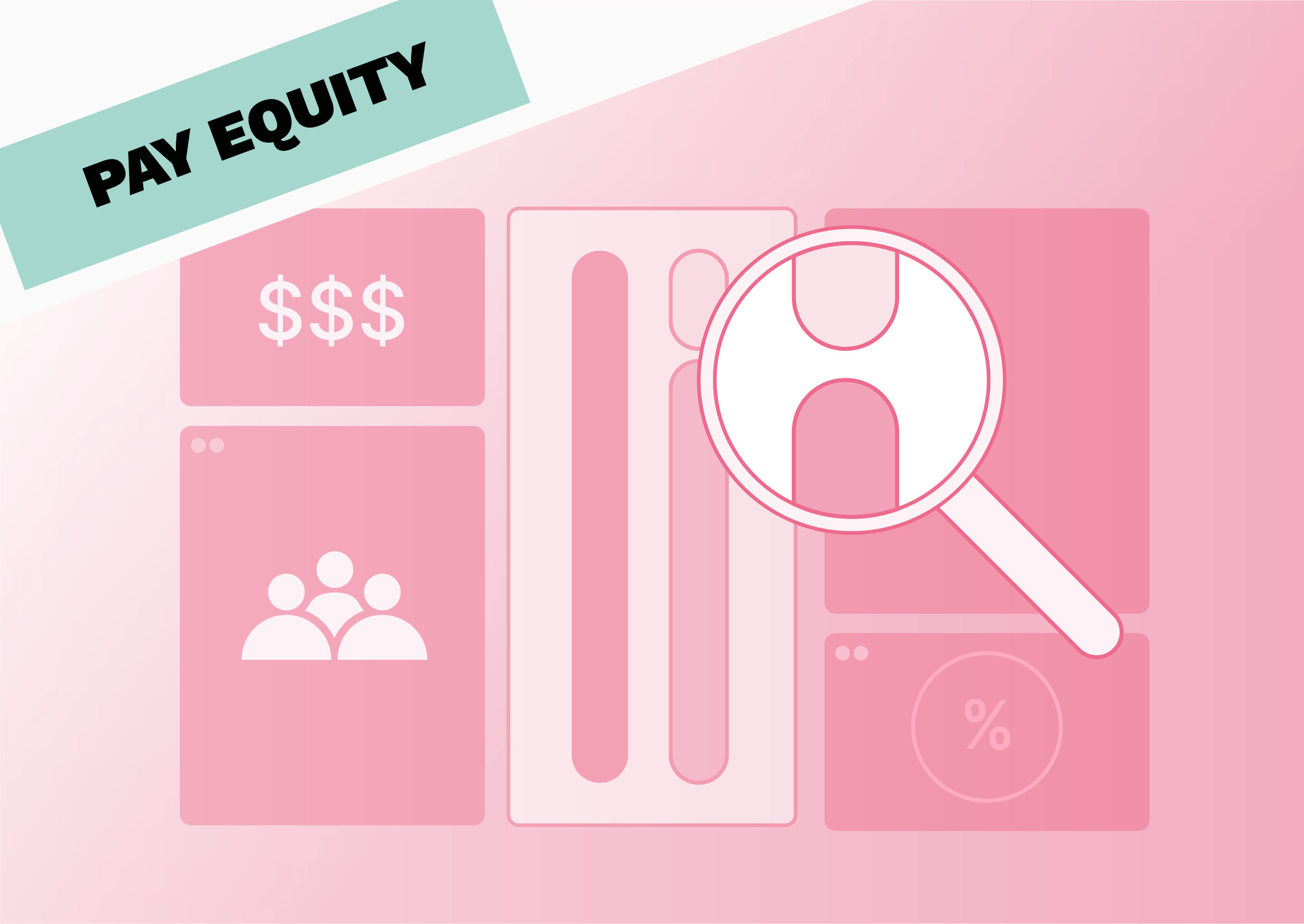Exploring the Gender Pay Gap in Europe in 2024
Almost every European country has some sort of pay equity legislation on its books. In the UK, for example, paying men and women differently for the same work has been illegal for more than 50 years.
And the EU pay transparency directive is about to make it even harder for employers to practise pay discrimination.
Despite this, there is still a gender pay gap in Europe.
At Figures, our mission is to help every employer deliver fair, equitable pay. But we also believe you can’t solve a problem unless you fully understand it.
That’s why we’ve decided to dive into our data and explore the current state of the gender pay gap in Europe — plus how the figures compare to 2023.
About our data
At Figures, we collect live data from more than 1000 companies across Europe. This data is synchronised daily through integrations with our clients’ HRIS systems, which means we know it’s accurate and up to date.
The data referenced in this article is made up of more than 75,000 data points collected in February 2024. The 2023 data was collected during the same week in February 2023.
However, a word of warning: our data set has changed a bit over the last 12 months. To keep the comparison accurate, we’ve only taken into account data from customers that were included in our last set of data.
Since a few of those customers are no longer with us, the data we’re comparing here isn’t 100% the same — but it still provides a snapshot of what’s going on in Europe.
What the data says
OK, that’s enough preamble — let's jump into what we’ve discovered about the gender pay gap in Europe in 2024.
Unadjusted gender pay gap results
The unadjusted gender pay gap is the difference between the average pay of all men vs. all women, regardless of their role, level or seniority.
That means that an unadjusted gender pay gap isn’t necessarily a sign of pay discrimination between men and women. Instead, it could indicate more systemic issues like the fact that there are fewer women in senior (i.e. higher paid) positions.
The unadjusted gender pay gap is calculated using this formula:
(median income for men - median income for women) / median income for men
In 2024, we found an overall unadjusted gender pay gap of 18.2% This is slightly lower than the overall gap in 2023, which was 18.6%.
The unadjusted pay gap varies across the different countries we analysed. In 2024, it was:
- 15.9% in France
- 16.6% in Germany
- 24.1% in the UK
- 21.9% in the Netherlands
When we compare this to our 2023 data, we find that the unadjusted gender pay gap has decreased in Germany and the UK, but slightly increased in France (from 15.7% in 2023) and the Netherlands (from 20.1% in 2023).
We’ve identified a particularly strong decrease in Germany, where the gap dropped more than five percentage points (21.7% in 2023 vs. 16.6% in 2024).
{{cta}}
Gender pay gap by industry
We can also break down the gender pay gap figures by industry. In 2024, for example, we found that the industries with the biggest gaps were:
- Banking, insurance and finance (21.6%)
- Fashion, luxury, beauty and lifestyle (20.4%)
- Consulting and audit (20.0%)
When we compare this to 2023, we see that the gender pay gap has decreased in the first two industries, but increased by almost four percentage points in consulting/audit.
Gender pay gap by job family
In our 2023 report on the gender pay gap, we revealed that there’s a negative correlation between the number of women in a particular job family and the gender pay gap within that group. Put another way, the more women work in a particular function, the lower the unadjusted pay gap.
Our 2024 data, bears this out in all countries apart from Germany, where this trend seems to have reversed.

Percentage of women by job level
It’s also interesting to look at the percentage of women that hold jobs at each level of seniority within an organisation. In 2023, women made up 51% of junior employees. However, the number of women decreases as the levels advance. In the C-Suite, only 16.5% of employees are women.
The data for 2024 shows the same trend, with women holding up 51.7% of junior roles, but only 16.8% of C-level positions. That means that there are around five men for every one woman on the C-Suite.
However, there has been a slight increase in the percentage of women in senior, staff and team-lead-level positions. Companies that are serious about closing their gender pay gap will need to put systems in place to help more women move up the corporate ladder in 2024 and beyond.
Adjusted gender pay gap results
The adjusted gender pay gap is the difference in average compensation for men and women, adjusted for their job and seniority level. This means that it’s a ‘purer’ indicator of the gender pay gap since theoretically there should be no difference.
In 2023, we found an adjusted gender pay gap of 1.6% across all of the countries we analysed. This has slightly increased, reaching 1.8% in 2024.
Here’s that data broken down by country:

As you can see, the adjusted gender pay gap has decreased in the UK, but increased in every other country we analysed.
What does this mean?
Overall, we haven’t seen a dramatic change in the gender pay gap compared to last year. The unadjusted gender pay gap has slightly decreased, from 18.6% in 2023 to 18.2% in 2024.
However, the adjusted gender pay gap is actually bigger than it was in 2023. Although the change is small (1.6% to 1.8%), this is still worrying as it could suggest that some companies are engaging in unfair or biassed pay practices.
Also, it’s worth considering that we’re only taking into account data from our clients. The fact that these companies use Figures means they’re taking a proactive approach to compensation — and likely making efforts to combat pay equity. That means that the data we’ve presented here might not be representative of the wider market.
How to reduce your gender pay gap in 2024
So, what should companies do to reduce their gender pay gap in 2024? Of course, the first step is to eliminate pay discrimination if there’s any going on in your organisation.
But this isn’t enough to reach full gender parity, since the unadjusted gender pay gap reveals that there are wider problems at play. Companies that are serious about achieving pay equity should first of all develop strategies to help women move up the organisational hierarchy at the same rate as men.
It’s also important to remember that women tend to take on a greater portion of caregiving and household responsibilities — which can leave them with less time to spend on work. Employers can help to lighten this load by providing benefits that emphasise work-life balance, and considering things other than the number of hours worked when setting criteria for raises and promotions.
Another important factor is pay transparency. Our previous research has revealed that companies that are more transparent about pay typically have smaller gender pay gaps than those that aren’t.
That means that, in 2024, it could be a good idea to think about opening up your pay practices for more public scrutiny and taking accountability for the systems you have in place. After all, with the EU pay transparency directive just around the corner, there’s never been a better time.
{{cta}}
Learn more
Want to learn more about pay equity and the gender pay gap? Follow us on LinkedIn or keep an eye on this blog for the latest insights. And if you want more right now, check out these articles from our archive:
Summarize this article with AI
No time to read it all? Get a clear, structured, and actionable summary in one click.






